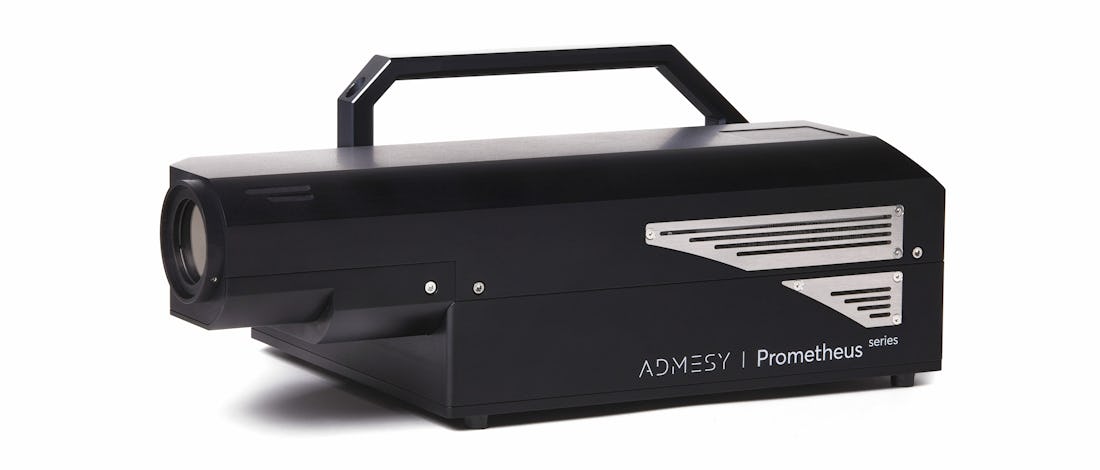Case Study – Measuring the Real and Virtual World – the Prometheus Viewfinder Spectrometer in Action
A colorful rainbow in the sky, a candle softly lighting up a room or a piece of glass harshly reflecting the sun. Every scene or light source one can imagine can be measured and assessed objectively with colorimetry.

Why would that be relevant? The answer might not be obvious at first sight, but we perceive about 80 percent of all the information with our visual sense. For many industries and applications it is vital to describe the visual reality in an objective manner. This information is then used to check if the color of a product produced is in tight tolerances. Or it can be checked if a traffic light is neither too bright, nor too dim and is compliant within the regulations. Another typical use case is the creation of a reproduction on a print or display. A spectrometer with viewfinder can basically cover those and almost any color measurement task.
Measure what you see
The Prometheus is a high-end spectroradiometer with an integrated viewfinder and uses the so-called Pritchard Optics. Here an objective lens forms an image at an angled mirror, which has a small hole. The light passing through the hole will hit the measurement sensor. The larger part of the mirror reflects the light into a viewfinder. The image displayed in the viewfinder will display the complete scene surrounding the measurement spot, while the measurement spot itself will be displayed as a small black circle. The measurement angle of the Prometheus Viewfinder Spectrometer is 1.2°, therefore allowing very precise measurements of even small areas. In case of the Prometheus the viewfinder is electronic with a built-in camera - similar to a mirrorless camera. This allows not only an easy alignment of the measurement spot, but also saving an image of the measurement scene for documentation purposes.

When we talk here about color measurement that of course includes the brightness assessment, or more correct described as the luminance. But also includes combining several measurements, for example to determine the gamma-value or the color range, the so called gamut, of a display.
From the real world to a virtual world and to display applications
Almost anything we can see can be measured with our Prometheus Viewfinder Spectrometer. One use case is the measurement of odd shaped objects like a pen. For practical reasons reflective measurements are typically done with dedicated devices with a built-in light source. But the small surface of a finished pen can not easily be measured with typical spectrometers for reflection measurement. So to ensure the brand color a viewfinder spectrometer came to rescue. The same company also needed to ensure that advertisements displayed on large LED panels in a football stadium showed the correct brand colors. Again another surprising use case of a viewfinder spectrometer – measuring the display color over the football field and then checking the displayed colors on the broadcast TV.
“Measuring the color in any real world scenario is possible.”
Measuring the color in a any real world scenario is possible. But an even more common use case of a viewfinder spectrometer is to measure the color of extended reality setups. Virtual reality, augmented reality or mixed reality – for an observer it does not make a difference how an image is generated. In the same way a viewfinder spectrometer does not care about the technology behind, but allows the objective assessment of any XR setup. Depending on the actual setup custom lenses or attachments might be needed. With the standard Prometheus Viewfinder Spectrometer scenes in a (virtual) distance between 250 mm up to infinity can be measured.
Last but not least any kind of traditional display application, such as smartphones, smartwatches, tablets, laptops, TV’s, LED banners is a perfect use case for the Prometheus Viewfinder Spectrometer. Color accuracy, gamma curves, contrast ratio and even flicker or response time measurements can be covered. During R&D the quick and precise measurement is invaluable, not only giving the colorimetric tristimulus values, but also offering the spectral power distribution (SPD) for a better understanding and analysis. Then in production settings a high-end spectroradiometer can be used on its own, for example to calibrate highly specialized monitor solutions for video and graphic arts or medicine. Or the spectroradiometer will server as the reference device to establish the calibration of high-speed colorimeters, resulting in a measurement speed which is not only blazingly fast, allowing shortest takt times, but at the same time ensuring the highest possibly measurement accuracy.

One measurement device to rule them all
It should now be obvious why a viewfinder spectrometer is not only the color scientists favorite and most versatile measurement instrument, but also the perfect solution for R&D tasks and as well suited for process control and quality assessment in the production process. Not to forget that the Prometheus Viewfinder Spectrometer satisfies the highest demands. The high dynamic range, excellent low-light performance, low straylight, polarization insensitivity and highest wavelength accuracy with built in monitoring ensure the most accurate color measurements possible. The sheer amount of possibilities, coupled with the highest optical performance explains why we think the Prometheus Viewfinder Spectrometer is a measurement device to rule them all.

